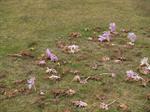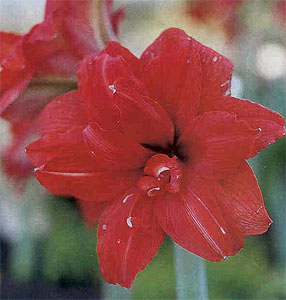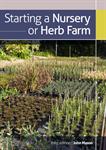Landscape Your Garden With Bulbs
Bulbs create some of the most magnificent displays. If you want to experience the glory of spring or autumn bulbs in full bloom, then now is the time to plan and plant!
What Bulbs Need
Bulbs need good drainage to prevent the bulbs rotting during the dormant period, moderately fertile soil, and a reasonable amount of water during the growing season. Most prefer to grow in full sun or lightly dappled shade, with some protection from strong winds.
Choose bulbs suitable for your climate. Your local nursery will be able to advise.
How to Grow Bulbs
The soil should be fertile and well drained, with well-rotted compost added to improve the structure, particularly in heavy clay soils.
Generally bulbs are planted at a depth equal to twice the length of the bulb. They can be planted using a trowel to create a hole deep enough and wide enough to accommodate the bulb. The bulb is placed in the hole with the basal plate (ie. the bottom of the bulb) resting on the bottom of the hole; the hole is then back–filled with soil and gently firmed down. Cover the soil with a 2-5cm layer of mulch (pea straw or fine bark are ideal) to conserve moisture.
The following season, just when the first leaves are coming up, fertilise with sulphate of potash. This helps with the bulbs’ growth and development.
After they have finished flowering let them die down before tidying up the foliage, as it is these leaves which provide much of the nourishment for the next year’s growth. Some people tie or plait the leaves together to keep them tidy and out of the way. The soil should be kept reasonably moist until the leaves have completely died back.
Many bulbs can be grown for several years without lifting, especially in cooler areas. This includes Narcissus, Nerines, Bluebells, Grape hyacinth, Lachenalia sp., Snowdrops, Allium, Babiana, Colchium sp. Crocus, Crinum, Gladiolus, Ixia, Sparaxis and Watsonia. Unless you intend to let the bulbs naturalise, they are best lifted and divided every 3 - 4 years or so, to improve flower quality.
Watch out for bulb rots, especially in heavy, wet soils - good drainage will help prevent this problem. The main pests are aphids, bulb flies and soil nematodes. Aphids and bulb flies can be controlled by spraying with sprays such as pest oil, Pyrethrum, Maldison or Rogor.
LANDSCAPING WITH BULBS
Garden Borders
Depending on the style of your garden and the effect you wish to create, the bulbs can be planted:
- in clumps, between groundcovers, annuals and perennials
- mass planted in drifts throughout the garden bed using blocks of colours merging into each other
- in formal rows bordering paths, garden edges or driveways
Meadows (planting in lawns)
 A meadow effect can be created by planting large quantities of bulbs in the lawn, and allowing them to naturalise. This works best in cool areas with reasonably fertile, well-drained soil, otherwise the bulbs will quickly rot or dry out. You won’t be able to mow the lawn for several months - from early winter when the leaves emerge to early summer when the leaves die back - so you’ll need to choose a low-use area which can be left to go slightly wild. Daffodils, Jonquils, Freesias, Crocus and Sparaxis are the best bulbs for naturalising in lawns.
A meadow effect can be created by planting large quantities of bulbs in the lawn, and allowing them to naturalise. This works best in cool areas with reasonably fertile, well-drained soil, otherwise the bulbs will quickly rot or dry out. You won’t be able to mow the lawn for several months - from early winter when the leaves emerge to early summer when the leaves die back - so you’ll need to choose a low-use area which can be left to go slightly wild. Daffodils, Jonquils, Freesias, Crocus and Sparaxis are the best bulbs for naturalising in lawns.
Rockery Gardens
Rockeries are especially well suited to the planting of the smaller flowering bulbs, including miniature Daffodils, Crocuses, Hyacinths, Muscari (Grape Hyacinth), Scilla (Bluebell), Galanthus (Snowdrops) and Ipheion (Spring Starflower). Plant in pockets of soil where their small flowers can be viewed to best effect.

Cottage Gardens
A cottage garden wouldn’t be complete without an array of brightly coloured spring bulbs planted between perennials and annuals. Place a bamboo stake and tag with the name of the bulbs to remind you of their location and to avoid digging in that spot and damaging the bulbs.
Woodland Gardens
In cool climates, bulbs can be planted under deciduous trees and left to naturalise as a groundcover. Popular choices include Daffodils, Cyclamens, Crocuses, Snowflakes (Leucojum), Sparaxis, Freesias and Bluebells.
Container Growing
Bulbs are excellent for growing in pots, especially in warmer climates where they can be stored and chilled before planting. Use a free-draining potting mix or a special bulb-growing fibre (available from nurseries) and plant the bulbs much closer than you would in the open ground. Keep the mix or fibre moist during the growing period and give some liquid feeds (but not too much otherwise you’ll end up with lots of leaves and no flowers).
If you are in the southern hemisphere plant now for spring:
- Alliums
- Alstroemeria (Peruvian Lily)
- Amaryllis (Hippeastrums)
- Anemone
- Babiana
- Crocus
- Eucharis (Amazon lily)
- Freesia
- Galanthus
- Habranthus.
- Hyacinth (some) (Hyacinthus) season.
- Ixia (Corn Lily)
If you are in the northern hemisphere plant now for autumn:
- Autumn Crocus
- Dahlia
- Iris (some)
- Lycoris
- Nerine
- Colchicum
- Leucojum
- Sternbergia
If you would like to communicate with one of our professional tutors, consider using our free career counselling service, to help you decide of a learning and career development direction that is tailored to your needs. click for details
VISIT THE ACS ONLINE E BOOKSTORE
 Quality eBooks written by our staff
Quality eBooks written by our staff- Wide range of Horticulture titles by John Mason, author of over 40 gardening books, garden magazine editor, nurseryman, landscaper and principal of ACS.
- Ebooks can be purchased online and downloaded straight away.
- Read on an ipad, computer, iphone, reader or similar device.
- New titles published every month –bookmark and revisit this site regularly
- Download sample pages for free, to see what each book is like.
More from ACS
Course - for the professional grower or hobbyist.
View Course
Get a great overview of plant taxonomy, and learn to identify over 100 plants as well as many plant families.
View Course
Ebook - a great informative text to extend your knowledge and get it right the first time!
View eBook